Adaptive Radiation
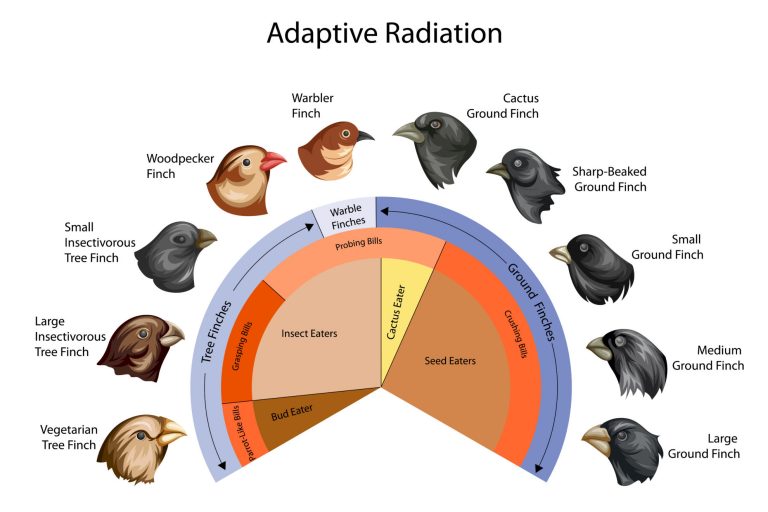
Diagram showing adaptive radiation of Darwin’s finches
Table of Contents
Reviewed by: Mary Anne Clark, Ph.D.
When Charles Darwin was in the Galapagos Islands, one of the first things he noticed is the variety of finches that existed on each of the islands. All in all, there were many different species of finch that differed in beak shape and overall size. This is adaptive radiation and natural selection at work.
Darwin’s Finches
These finches, better known as ‘Darwin’s Finches’ illustrated adaptive radiation. This is where species all deriving from a common ancestor have over time successfully adapted to their environment via natural selection.
Previously, the finches occupied the South American mainland, but somehow managed to occupy the Galapagos islands, over 600 miles away. They occupied an ecological niche with little competition.
As the population began to flourish in these advantageous conditions, intraspecific competition became a factor, and resources on the islands were squeezed and could not sustain the population of the finches for long.
Due to the mechanisms of natural selection, and changes in the gene pool, the finches became more adapted to the environment, illustrated by the diagram below.
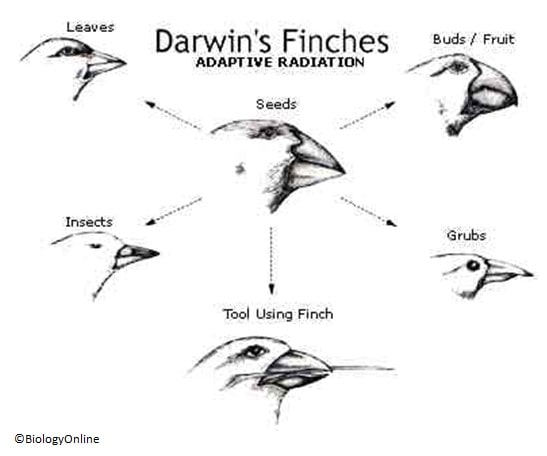
As competition grew, the finches managed to find new ecological niches that would present less competition and allow them and their genome to be continued.
As indicated by the diagram above, the finches adapted to take advantage of the various food sources available on the island. Over time, the original finch species might have disappeared, but by diversifying, would stand a better chance of survival.
All in all, the finches had adapted to their environment via natural selection, which in turn, has allowed the species to survive in the longer term, the prime directive of any species.
The Marsupials
The marsupial mammals occupy Australia, and dither from placental mammals because they bear their young inside a pouch. Long ago, the landmass of Earth consisted of one single continent, Pangaea, where all animals existed. When this continent fragmented into smaller continents, the geographical barrier meant the mammals of the time could no longer reproduce with one another. From here on in, the gene pool of these groups of mammals would become increasingly different until they could no longer reproduce with one another. This occurrence applies to the marsupial family of mammals that occupy Australia.
All the marsupials in present-day Australia would have evolved from one common ancestor. However, over time and via natural selection, the many marsupial species (i.e. kangaroo and koala) have occupied their own ecological niche and adapted accordingly. Kangaroos have long powerful legs to cover the wide area of land that they occupy while the koala’s smaller structure and more centralized center of gravity allow them to climb trees and obtain the eucalyptus that they feed on.
Humans
Humans, the most evolved species on the planet, have also undergone many changes over time from our ancestors. Here are some examples
- Humans are bipedal, meaning we walk on two of our limbs. The other limbs, our arms, and subsequent hands have adapted to do precision tasks such as typing or tying shoelaces, common tasks that we perform in our own environment.
- The amount of melanin in our skin is representative of the environment we live in, i.e. dark-skinned people occupy hotter climates.
- The structure of our body gives an indication of the temperature in our climate also. Humans who have produced offspring that successfully live in a cold environment tend to be broader and smaller in stature while hotter environments are occupied by thinner taller humans.
It is worth noting that if two groups of humans were totally isolated over time, it is entirely possible that a different species could spawn from their own because the two groups would be adapting to their own environment over time. This would mean changes in the gene pool in each of the groups, to the point where the two groups could not reproduce with another and produce fertile offspring due to these genetic differences. At this point, with any species, a new one has begun.
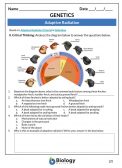 | ADAPTIVE RADIATION QUIZ A two-paged questionnaire on adaptive radiation. The first page is a multiple choice and the second page is diagram analysis. This is meant to assess the comprehension of adaptive radiation while enhancing critical thinking skills. Subjects: Genetics & Evolution |
You will also like...

IQ, Creativity and Learning
Human intelligence provided the means to utilize abstract ideas and implement reasoning. This tutorial takes a further l..

Control of Body Movement
Some of the body movements can be controlled at will, others cannot. The body has a motor program, which is the pattern ..

Neurology of Illusions
Illusions are the perceptions and sensory data obtained from situations in which human error prevents us from seeing the..
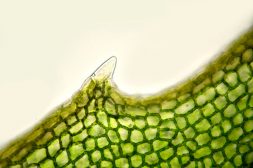
Plant Meristems and Growth
In plants, growth occurs in meristems, which are the site of repeated cell division of unspecialized cells. These cells ..

Regulation of Organic Metabolism, Growth and Energy Balance
The human body is capable of regulating growth and energy balance through various feedback mechanisms. Get to know the e..
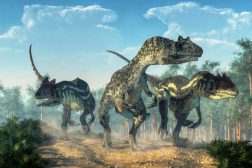
The Dinosaurs
Dinosaurs represented a major turn in the evolutionary development of organisms on Earth. The first dinosaurs were presu..
